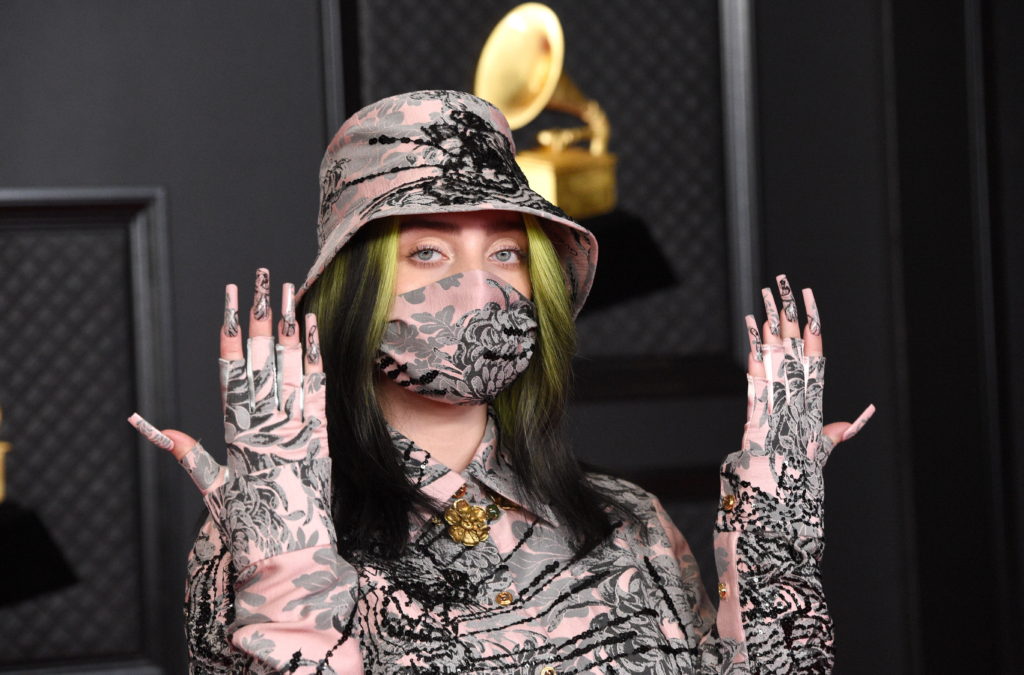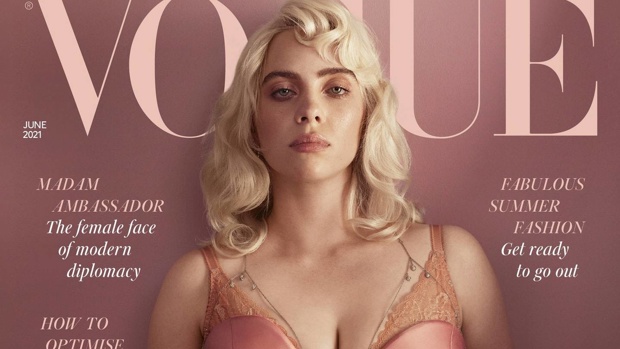Billie Eilish Vogue has been an icon of individuality since her rise to fame. From her unique music style to her bold fashion choices, she’s been a game-changer in pop culture. Her appearance on the cover of Vogue marked a new chapter in her journey, signaling a powerful evolution both personally and artistically. It was a moment that captivated her fans and challenged society’s expectations of beauty, body image, and self-expression.
In this article, we will explore Billie Eilish’s transformation as highlighted in her Vogue cover, the significance of her style evolution, the public’s reaction, and what her bold statements mean for the future of fashion and pop culture.
Who Is Billie Eilish? A Brief Overview
Billie Eilish Pirate Baird O’Connell, known simply as Billie Eilish, was born on December 18, 2001, in Los Angeles, California. From a young age, she was immersed in a creative environment, with her parents being involved in the entertainment industry. She began her music career at just 14 years old with the breakout single “Ocean Eyes,” which quickly went viral.
Her distinct sound, often described as a blend of dark pop, indie, and electropop, captivated audiences. Billie’s raw, emotionally charged lyrics, paired with her hauntingly beautiful voice, set her apart from her peers. With hits like “Bad Guy,” “When the Party’s Over,” and “Everything I Wanted,” Billie became a sensation, winning multiple Grammy Awards and becoming one of the youngest and most influential artists in the music industry.
Billie’s Unique Style

Beyond her music, Billie Eilish became known for her oversized, androgynous fashion sense. In a world where pop stars are often expected to flaunt their bodies in revealing outfits, Billie took a different route. She wore baggy clothes, often head-to-toe in designer streetwear, to avoid being sexualized and to maintain control over how she was perceived.
This decision made her a role model for many young people who didn’t conform to society’s traditional beauty standards. It also sparked conversations about body image, self-expression, and the pressure placed on female artists to look a certain way.
The Vogue Cover: A Bold New Look
In May 2021, Billie Eilish graced the cover of British Vogue, and it was unlike anything her fans had ever seen before. Gone were the oversized clothes and neon-green hair. Instead, Billie was styled in a corset, lingerie-inspired outfits, and platinum blonde hair. The Vogue cover presented a more feminine, sultry side of Billie that she had never shown publicly before.
This transformation was shocking to some and empowering to others. But one thing was clear: Billie was still in control of her image. She wasn’t changing because of external pressure; she was evolving on her own terms.
The Inspiration Behind the Transformation
In the Vogue interview, Billie explained that the decision to wear more form-fitting clothing and embrace a different aesthetic was hers alone. She wasn’t trying to fit into a particular mold or appease critics. Instead, she saw it as an opportunity to explore a different side of herself and her femininity.
She expressed her frustration with the double standards women face in society. If women dress modestly, they are criticized for being prude or boring. If they dress more revealingly, they are sexualized and objectified. Billie wanted to show that a woman can dress however she wants without being judged or labeled.
Empowerment Through Fashion

For Billie, fashion became a tool for self-expression and empowerment. By wearing a corset and embracing a more traditional “feminine” look, she wasn’t abandoning her previous style or giving in to societal expectations. Instead, she was asserting her right to dress however she wanted, whenever she wanted. Billie told Vogue, “It’s all about what makes you feel good.”
This message resonated with many of her fans. It was a reminder that women shouldn’t have to conform to any particular image. They can be fluid, constantly evolving, and multifaceted—just like Billie.
Public Reaction: A Divided Response
As with any major transformation, Billie’s Vogue cover elicited mixed reactions. Some fans were thrilled by her new look and praised her for breaking boundaries. They saw it as a moment of empowerment, a young woman taking control of her narrative and challenging societal norms around beauty and body image.
However, not everyone felt the same. Some critics accused Billie of “selling out” or abandoning her previous image. They argued that she was giving in to the pressures of the music industry, which often encourages female artists to adopt a more sexualized persona to boost their careers.
A Statement Against Double Standards
In response to the criticism, Billie remained unapologetic. She emphasized that her transformation was about reclaiming her body and her image. She was tired of being put into a box and judged for her fashion choices, whether baggy or form-fitting. By embracing both styles, she challenged the very idea that women have to choose one image and stick to it.
Billie also called out the double standards that women in the public eye face. When she wore oversized clothing, she was praised for being modest but criticized for not being “feminine” enough. When she wore more revealing outfits, she was immediately sexualized. Billie used her Vogue cover to make a powerful statement: women can dress however they want, and they shouldn’t be judged or sexualized for it.
The Fashion Industry’s Response
Billie’s Vogue cover also sent shockwaves through the fashion industry. Many designers, editors, and stylists praised her for redefining beauty standards and pushing the boundaries of what is considered fashionable. She proved that fashion can be both empowering and liberating, no matter what style you choose.
Embracing Body Positivity
Billie’s cover was also seen as a step forward for body positivity. While she has been open about her struggles with body image and the pressures of being in the public eye, this photoshoot was a way for her to reclaim her body and feel confident in her own skin. She acknowledged that wearing a corset and embracing a more traditionally feminine look didn’t mean she was conforming to beauty standards. Instead, she was using fashion as a tool to feel empowered.
This message of body positivity resonated with many of her fans, especially young women who have grown up in a world where body image is often scrutinized and judged. Billie’s Vogue cover was a reminder that beauty comes in many forms, and that it’s okay to embrace different styles and looks.
What This Means for the Future of Pop Culture
Billie Eilish Vogue cover marked a turning point not just for her, but for pop culture as a whole. It challenged the rigid beauty standards and expectations that have long been placed on female artists. By embracing both her modest, oversized clothing and her more revealing outfits, Billie showed that women don’t have to fit into one mold. They can be whoever they want to be, and that identity can be fluid and ever-changing.
Redefining Feminism in Pop Culture
Billie’s transformation also sparked a conversation about feminism in pop culture. Her decision to dress differently wasn’t about giving in to societal pressure; it was about reclaiming her body and her image. In a world where women are often judged for how they look, Billie’s message was clear: women should be free to express themselves however they want, without fear of judgment or objectification.
This message of empowerment resonated with many young women who have grown up in a society that often tells them how they should look and act. Billie’s Vogue cover was a powerful reminder that true feminism is about choice and self-expression, and that women should be free to define themselves on their own terms.
Conclusion
Billie Eilish Vogue cover was more than just a photoshoot; it was a powerful statement about identity, self-expression, and empowerment. It marked a new chapter in her journey as an artist and a person, one where she reclaimed her body and her image on her own terms. By challenging societal norms and embracing both modest and more revealing styles, Billie showed the world that women can be multifaceted, fluid, and unapologetically themselves.
Her transformation sparked important conversations about body image, feminism, and the double standards women face in the public eye. It also sent a message of empowerment to her fans, reminding them that beauty comes in many forms and that they should be free to express themselves however they want.
FAQs
Q: Why did Billie Eilish decide to change her look for Vogue?
A: Billie Eilish wanted to explore a different side of herself and her femininity. She made the decision to wear more form-fitting clothing and embrace a new aesthetic as a way to reclaim her body and express herself on her own terms.
Q: What was the public’s reaction to Billie Vogue cover?
A: The public’s reaction was mixed. Some praised Billie for her transformation and saw it as empowering, while others criticized her for “selling out” or abandoning her previous image. However, Billie remained unapologetic, emphasizing that her transformation was about self-expression and empowerment.
Q: What message did Billie Eilish convey through her Vogue cover?
A: Billie’s Vogue cover conveyed a powerful message about identity, body image, and empowerment. She challenged societal norms and double standards, showing that women can dress however they want without being judged or objectified.
Q: How did Billie Eilish Vogue cover impact the fashion industry?
A: Billie’s cover was praised by many in the fashion industry for pushing boundaries and redefining beauty standards. It also contributed to the ongoing conversation about body positivity and self-expression in fashion.
Q: What does Billie Eilish transformation mean for the future of pop culture?
A: Billie’s transformation signals a shift in pop culture, where women are increasingly reclaiming their bodies and expressing themselves on their own terms. It challenges traditional beauty standards and promotes empowerment, self-expression, and body positivity.


